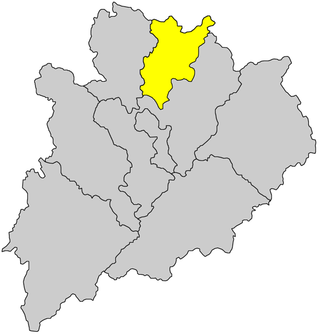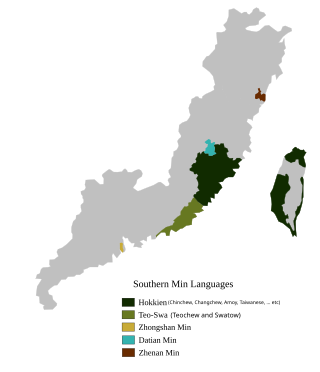Newark most commonly refers to:
Westport is the name of several communities around the world.
Bellevue means "beautiful view" in French. It may refer to:
Taiping, Tai-p’ing, or Tai Ping most often refers to:
Silver Lake may refer to:
Jinshan can refer to places:

Huizhou is a city in central-east Guangdong Province, China, forty-three miles north of Hong Kong. Huizhou borders the provincial capital of Guangzhou to the west, Shenzhen and Dongguan to the southwest, Shaoguan to the north, Heyuan to the northeast, Shanwei to the east, and Daya Bay of the South China Sea to the south. As of the 2020 census, the city has about 6,042,852 inhabitants and is administered as a prefecture-level city. Huizhou's core metropolitan area, which is within Huicheng and Huiyang Districts, is home to around 2,090,578 inhabitants.

The Beijing–Kowloon railway, also known as the Jingjiu railway is a railway connecting Beijing West railway station in Beijing to Shenzhen railway station in Shenzhen, Guangdong Province. It is connected with Hong Kong's East Rail line across the border, which terminates at Admiralty station in its namesake business district.
North Creek may refer to:

The Ting River flows 300 kilometres (190 mi) from Ninghua County in western Fujian south to the port and Special Economic Zone of Shantou, Guangdong. It is a main tributary of the Han River and is also referred to Hakka Mother River.

The Xiamen–Shenzhen railway, also known as the Xiashen railway, is a dual-track, electrified, high-speed rail line connecting the major coastal cities of Xiamen in Fujian and Shenzhen in Guangdong. The line has a total length of 502.4 km (312.2 mi) and forms part of China's Hangzhou–Fuzhou–Shenzhen passenger-dedicated railway. Construction of the Xiashen line began on November 23, 2007, and the line entered into operation on December 28, 2013.

The Hangzhou–Fuzhou–Shenzhen railway refers to the dual-track, electrified, high-speed rail lines (HSR) in service along the southeastern coast of China, linking the Yangtze River Delta on the East China Sea and Pearl River Delta on the South China Sea. It is one of the eight arterial high-speed rail corridors of the national 4+4 high-speed rail grid. The southeast coast is the only region of high-speed rail construction where no previous conventional railroads existed. Hence, the high-speed rail lines built on the southeast coast will, for the most part, carry both passenger and freight traffic, and will not be passenger-dedicated lines that comprise most of the other HSR corridors in China.
Kaiyuan Temple could be several Buddhist temples:

The Sixian dialect, also known as the Sixian accent, is a dialect of Hakka used by Taiwanese Hakkas, and it is the most spoken dialect of Taiwanese Hakka, being used in Hakka broadcasting in many public occasions. The Sixian dialect is generally spoken in northern and southern Taiwan, with main representative regions being Taoyuan and Miaoli in the north, as well as the Liudui Region in Kaohsiung and Pingtung in the south.
Fengxi may refer to the following places in China:

Chaoshan or Teo-Swa is a Southern Min language spoken by the Teochew people of the Chaoshan region of eastern Guangdong province, China, and by their diaspora around the world. It is closely related to Hokkien, with which it shares some cognates and phonology, though the two are largely mutually unintelligible.
This page is based on this
Wikipedia article Text is available under the
CC BY-SA 4.0 license; additional terms may apply.
Images, videos and audio are available under their respective licenses.






